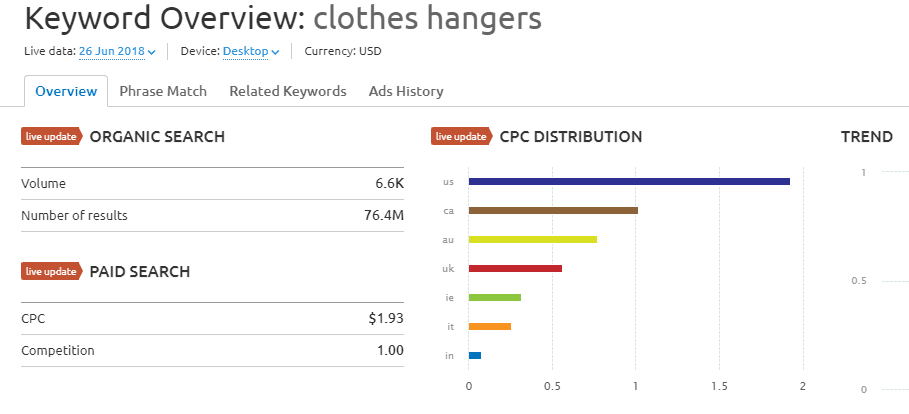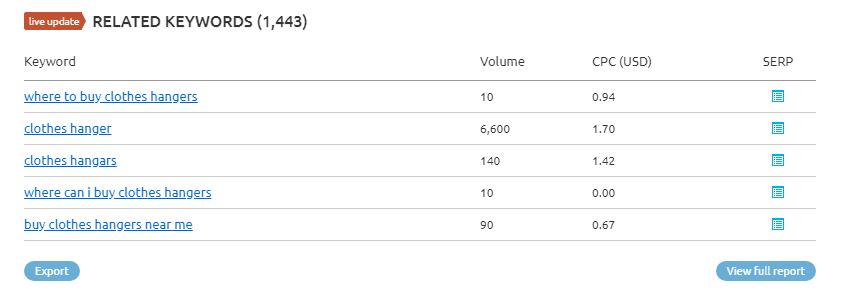If you want to promote your website, online ads are one of the best ways to do it. With AdWords, you can reach one of the world’s largest audiences, as long as you have the budget. The only problem is, budgeting for AdWords costs can be complicated if you don’t know how much you should expect to pay.
Luckily, there is a lot of AdWords data available to the public. Plus, you can set up an AdWords account and test it without spending a dollar. Today, we’re going to talk about how AdWords calculates prices, how much clicks and impressions cost, and how to budget accordingly.
Let’s talk numbers!
How Does AdWords Calculate Prices?
When it comes to AdWords – and most other online marketing platforms – the rates aren’t set in stone. A click on one of your ads may cost you anything from a few cents to several dollars, depending on many factors. The main two factors are as follows:
- Competitiveness. The more people that want to display their ads against specific search terms, the more expensive those ads will become.
- Where you want to display your ads. Showing your ads in Google search results tends to be more expensive than through their Display Network, for example.
To give you an idea, the average Cost-Per-Click (CPC) on AdWords is somewhere between $1-2 for Google search pages. However, AdWords doesn’t outright enable you to purchase ad displays. Instead, it enables you to bid on keywords continuously. You need to set a bid for your ads, and if your bid ‘wins’, your ad goes live. You therefore need to ensure your bid is competitive enough so it can start getting clicks and impressions.
The more competitive a keyword is, the higher your bid will need to be if you want your ad to get screentime, though. In some cases, people pay over $50 per click for niches that promise a high Return on Investment (ROI).
However, money is not the only factor that comes into play with AdWords. When you launch a campaign, Google also assigns a quality score to your ads. In some cases, ads Google deems to be high quality can ‘win’ auctions even with lower bids and get higher ‘ad ranks’. That means other ads will be lower on the totem pole, but they can still get published. This way, AdWords ensures that no single business can monopolize search results, even though they may have much larger budgets.
There’s a lot that goes into calculating your ads’ quality scores, so we won’t get into that today. However, suffice it to say ads with lower quality end up paying more in the long run. If you want to get the best return on your investment, you need to look for competitive keywords, create high-quality ads, and set aside a decent budget.
How Much Should You Expect to Spend on an AdWords Marketing Campaign?
When it comes to online ads, there are several types of campaigns you can run. The two most common of which are:
- Cost-Per-Click (CPC): With this type of campaign, you pay each time someone clicks on your ads.
- Cost-Per-Mille (CPM): In this case, you pay ad networks each time they display your ads a thousand times.
From a cost perspective, CPM ads tend to be cheaper. This may sound more cost effective, since you’re paying less for a thousand views. However, CPC ads have much higher rates of conversions, so in most cases you end up paying less for clicks than for views when you compare ROIs.
Since CPC ads are so prevalent in the industry, there isn’t a lot of information on CPM averages. As such, we’re going to focus primarily on CPC, while also talking about Cost-Per-Action (CPA). The latter is how much you should expect to spend on ads each time you get a conversion, and averages vary a lot depending on your industry.
Let’s start with the some of the most expensive fields, according to their CPC price:
- Insurance: $54.91
- Loans: $44.28
- Attorney: $47.07
- Credit: $36.06
- Hosting: $31.91
These fields are so expensive because they all have the potential for amazing ROI, such as landing clients with recurring payments. As such, one conversion can lead to multiple paydays. Earlier, we mentioned how the average CPC price stands at about $1-2, which means these premium fields are outliers.
If you want to get an idea of how much you should expect to spend on CPC ads for any given keyword, you can use a tool such as SEMRush to help you find out. It’s a premium service, but it enables you to do up to ten free searches with a free account:

For each keyword you analyze, SEMRush will give you an estimate on how much you can expect to spend for CPC ads. In this example, we looked up the term ‘clothes hangers’, which is not nearly as competitive as the insurance field:

With this tool, you also get access to related keywords and their estimated CPCs with your original report:

However, CPC data isn’t enough to tell you how much you should expect to spend on AdWords. What matters is your CPA, where the ‘A’ stands for both action and acquisition. This metric tells you how much you should expect to spend for each conversion.
The average CPA across all industries is around $60. For example, if you budget $20 per day, you could average one conversion every three days. However, this also depends on your CPC, which industry you’re targeting, and more.
From our experience, you want to budget for at least 100 clicks for each keyword you’re targeting. This way, you’ll have enough data to determine if the keyword is worth your effort and to determine which of your ads is doing better. It can be a lot of money, but it’s important you get enough data for a statistically significant experiment. Without it, you’re publishing ads blind and just hoping one of them will strike gold.
How Can You Control Your AdWords Expenditure?
You’re going to need at least around $100-200 to test ads for each keyword you want to target if you want to get enough data for significant results. That’s a lot of money, so you need to be careful about how you spend it.
Ideally, you shouldn’t blow your entire budget in a single day. It can be tempting to do so if you want to get quick results, but there are a lot of factors that can impact conversions. For example, people may be more willing to make purchases at specific times or dates. In other cases, your ads will do better with people from particular locations.
Your goal should be to spread your budget across at least a week or two. Think of it as a test phase., which helps you generate enough data to grow your campaign. Once you know which of your ads do better with which audiences, you can target those users specifically. This should net you more conversions and a more significant ROI.
Fortunately, AdWords provides you with advanced targeting and daily budgets, so you can configure your campaigns to run on their own. Then it’s just a matter of checking your reports frequently. If you see a campaign is going too long without netting you results, you can nix it and return to the drawing board.
Conclusion
Running ads online can get pretty expensive, and some spend hundreds or thousands of dollars daily on AdWords. However, you can also get good results with more modest budgets. Before you get started, though, it’s smart to budget how much you can spend on AdWords ads and stick to that number initially.
In most cases, you’ll need to spend at least $100-200 for a keyword with an average CPC to find out if your ads are getting the job done. If you aren’t making a return on your investment at that point, you may need to return to the drawing board to rethink your strategy.
Do you have any questions about AdWords costs in general? Let’s talk about them in the comments section below!
Article thumbnail image by Vadim Ermak / shutterstock.com
The post How Much Should You Expect to Spend on an AdWords Marketing Campaign? appeared first on Elegant Themes Blog.




